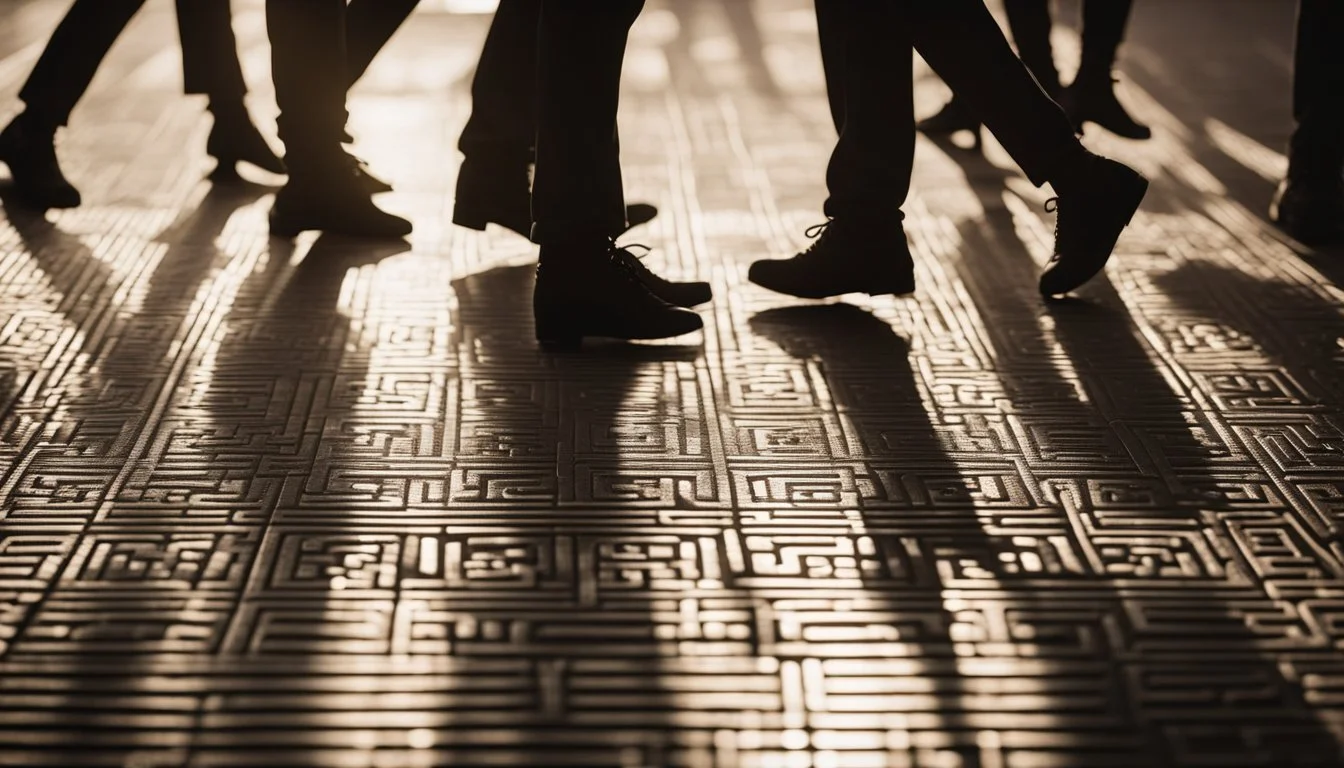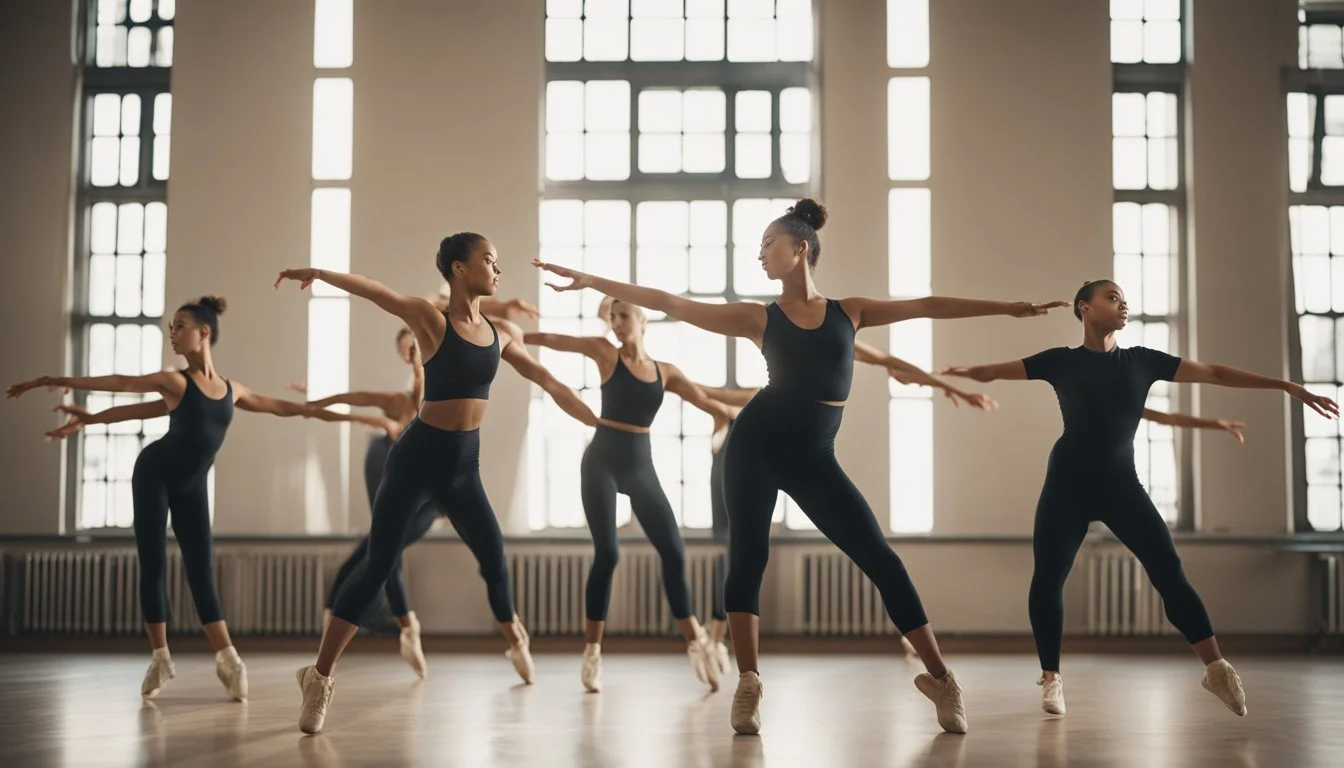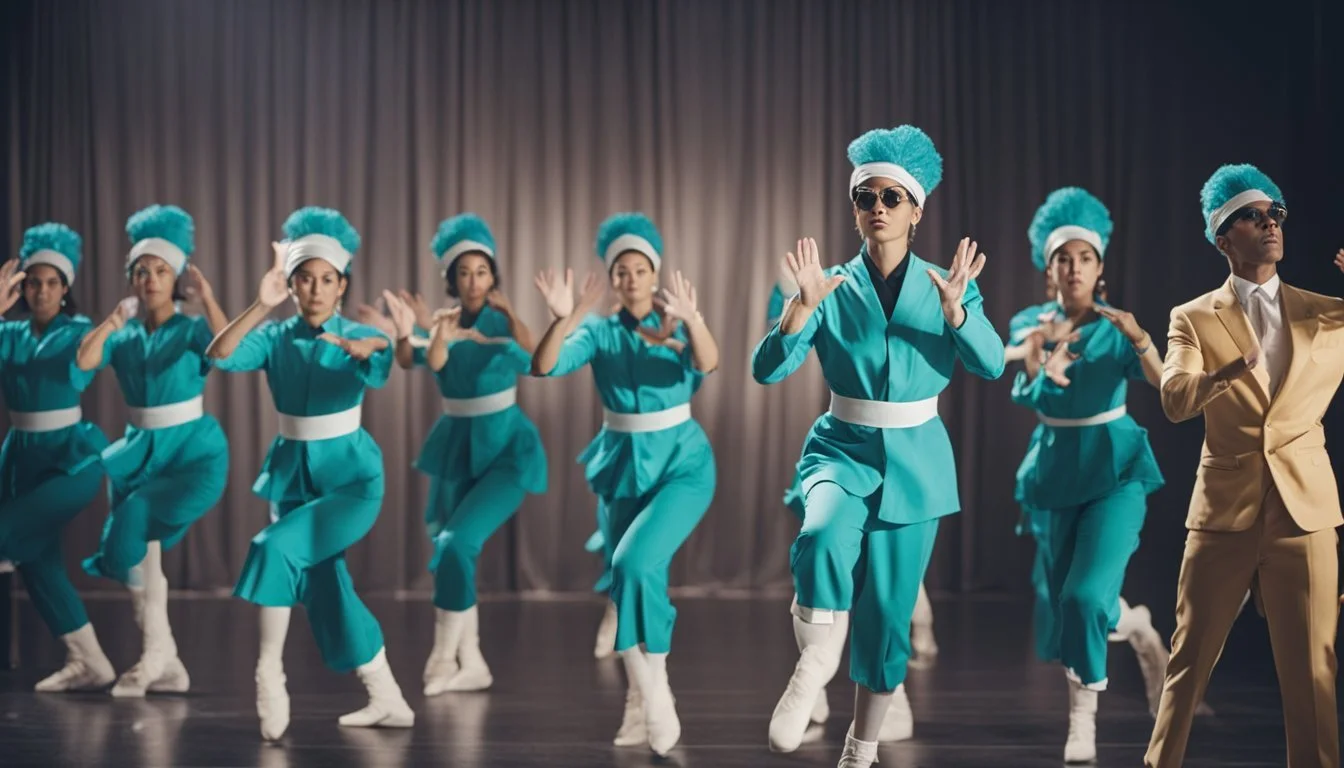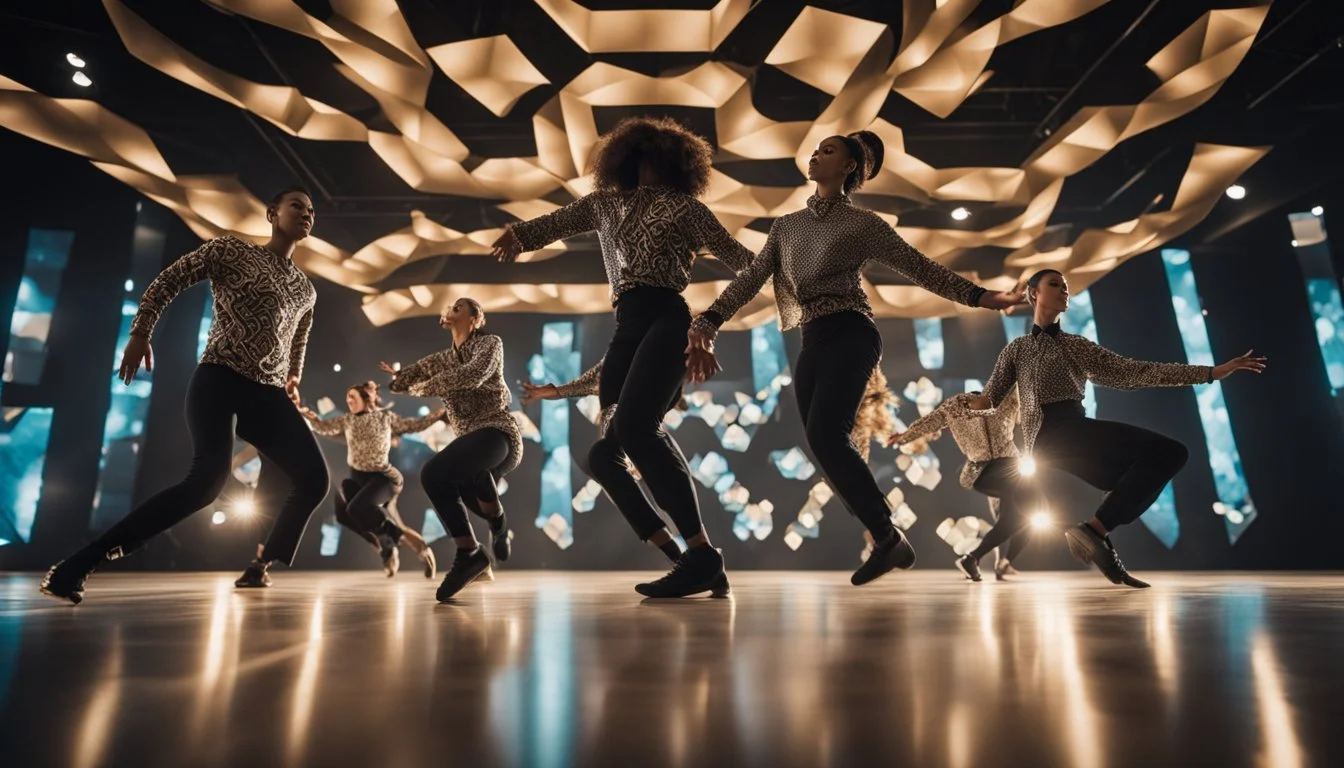10 Expert Tips for Directing Complex Choreographed Scenes
Essential Strategies for Filmmakers
Directing complex choreographed scenes poses a unique set of challenges and requires a blend of creativity, precision, and leadership. From synchronizing movements to ensuring every detail is executed flawlessly, the process demands attention to both technical and artistic elements. Effective choreography direction enhances the narrative and emotional impact of the performance, captivating the audience with seamless transitions and powerful visuals.
For directors at any experience level, mastering the art of choreography can significantly elevate their projects. Whether it's a dance number, a fight scene, or a musical performance, knowing how to bring together various components cohesively is key. This article provides expert tips to guide you through directing complex choreographed scenes, offering strategies to align vision with execution effectively.
1) Understand the Vision: Define the Scene's Purpose
A director must first understand the purpose of the scene. What emotions should it evoke? What story elements must it advance? This forms the foundation for all decisions and helps in communicating goals to the team.
Identify the key moments that need emphasis. These moments are crucial as they can significantly influence the audience's perception and engagement. Knowing these moments allows for more precise planning.
Collaborate with the scriptwriter to ensure the scene's intent aligns with the overall narrative. Misalignment can lead to confusion and weaken the story. Discuss any nuances that can enhance the scene's impact.
Visualize how the scene should look and feel. This mental image provides a clear guide that influences decisions on camera angles, lighting, and choreography. Clarity in vision helps keep the team synchronized.
Once the vision is clear, communicate it effectively to the cast and crew. Use visual aids, storyboards, or mood boards to illustrate the scene's atmosphere and pacing. Clear communication prevents misunderstandings and ensures everyone is on the same page.
Understanding the vision and defining the scene's purpose is essential. It serves as a compass, guiding every creative and technical choice.
2) Break Down Movements: Detailed Step-by-Step
Directing complex choreographed scenes starts with breaking down each movement in meticulous detail. This ensures each performer understands precise actions and timing.
Each movement should be isolated and practiced individually before combining them. This approach helps performers master each component, making the final choreography seamless.
Visual aids like reference images or videos can be beneficial. They provide a clear example of the desired movement, aiding in accurate replication.
Encourage performers to rehearse steps multiple times. Repetition builds muscle memory, making movements second nature.
Focus on specific body parts. Direct attention to hand placement, foot positioning, and body alignment for each step.
Provide clear, concise directions. Avoid vague language and ensure each instruction is easily understood and executable.
Incorporate props or set pieces gradually. This allows performers to become comfortable with their movements before adding complexity.
Regular feedback is essential. Offer constructive critique to refine movements, ensuring each step matches the intended choreography.
By breaking down movements into detailed, manageable steps, directors can efficiently guide performers in mastering complex choreographed scenes.
3) Cast the Right Talent: Look for Experience
Casting the right talent is crucial in directing complex choreographed scenes. Experienced actors often have a background in physical training or dance, making them better suited for demanding routines.
When selecting actors, review their past work. Look for performances that showcase their ability to handle intricate movements and timing.
Consider the actor's versatility. If they have previously performed in various genres involving choreographed scenes, it indicates a strong adaptability.
Always conduct practical auditions. Watching how actors move and respond to choreography during auditions provides valuable insights into their capability.
Discuss with your choreographer to ensure the selected actors can meet the scene’s physical demands. This collaboration ensures a seamless integration of choreography and performance.
4) Effective Communication: Clear and Concise Directives
Effective communication is critical when directing complex choreographed scenes. Clear and concise directives ensure every team member understands their role and responsibilities. This reduces confusion and increases efficiency.
Directors should use straightforward language, avoiding jargon and convoluted expressions. Brief and to-the-point instructions help cast and crew execute tasks accurately.
Visual aids, such as diagrams or annotated scripts, support verbal directives. These aids provide reference points, making it easier for everyone to stay on the same page.
Encouraging feedback fosters a two-way communication channel. This allows team members to voice concerns or ask questions, ensuring that misunderstandings are addressed promptly.
Checklists based on the 7 Cs of communication can help. Making sure that every directive is clear, concise, concrete, correct, coherent, complete, and courteous ensures effective communication at all times.
5) Utilize Rehearsal Time: Practice Thoroughly
Effective use of rehearsal time is essential. Directors should start with a clear plan of what needs to be accomplished in each session. This includes breaking down scenes into manageable chunks and focusing on specific elements such as blocking, timing, and emotional beats.
Repetition is key. Actors should run through their scenes multiple times to build muscle memory. It allows them to internalize movements and lines, ensuring a fluid and natural performance. Repeating scenes under varying conditions can help actors adapt to different situations they might encounter during actual performances.
Incorporating various rehearsal methods can also be beneficial. Techniques like the Table-Stage-Table Method and Storytelling Method can provide diverse ways to engage with the material. These methods encourage creativity and deepen actors' understanding of their roles and the overall production.
Directors should also allow time for actors to experiment within the framework. This exploratory process can lead to discovering more dynamic and authentic interpretations of scenes. Actors should feel free to make choices and receive feedback, creating a collaborative environment.
Running full sequences of scenes can help actors see the bigger picture. This practice not only reinforces learning but also helps in maintaining continuity and flow. It is crucial in ensuring that the transition between scenes is smooth and coherent.
Efficient rehearsal time management, combined with a variety of methods and repeated practice, contributes significantly to the quality of choreographed scenes. Directors must ensure that every minute is used productively to prepare the cast thoroughly for the final performance. By focusing on thorough rehearsal, directors pave the way for a flawless and engaging production.
6) Synchronize with Music: Timing is Key
Timing is crucial in choreographed scenes that involve music. The director must work closely with the choreographer and musicians to ensure every movement aligns perfectly with the soundtrack. This involves understanding the beats and rhythms of the music to coordinate actions seamlessly.
Utilizing technologies like a two-track editor can simplify the process. Software such as Sound Forge or Adobe Audition allows for precise syncing of audio and visual elements. Directors should leverage these tools to refine the timing of dance sequences or other choreographed elements.
Communication is vital. Directors should provide clear instructions to the cast and crew to maintain synchronicity. Frequent rehearsals with the music track will help performers internalize the rhythm and ensuring their movements are on point.
Directing a scene with synchronized music is an intricate task. Minor deviations can disrupt the flow. Directors need to pay close attention to the performance, ensuring that every beat is matched accurately to maintain the intended mood and pacing.
7) Incorporate Technology: Use Tools and Apps
Directors should leverage technology to streamline complex choreographed scenes. Several apps and tools can assist in visualizing, planning, and executing intricate moves.
Digital storyboard tools allow directors to map out scenes precisely. This can help communicate the vision more clearly to the entire team.
Motion capture technology is another invaluable tool. It captures dancers' movements for precise recall and adjustment.
Music apps can synchronize soundtracks seamlessly with choreography. This ensures dancers remain in sync with audio cues.
Video recording tools enable real-time playback. Directors and choreographers can review performances and provide immediate feedback.
Animation and3D modeling tools give a virtual preview of the scene. This helps in anticipating issues before rehearsals.
Social media platforms can facilitate collaboration. Sharing choreography videos privately with the team can enhance preparation.
By integrating these technologies, directors can ensure more efficient and precise execution of complex choreographed scenes.
8) Adaptability: Be Ready to Improvise
Directing a complex choreographed scene involves a significant amount of planning. Yet, unexpected challenges often arise.
An actor might need more time to master a particular move. Weather conditions or technical issues might disrupt the schedule. In these situations, the ability to adapt and improvise becomes crucial.
A director should be prepared to modify choreography on the fly. This might mean simplifying a complex sequence or finding a new way to emphasize key actions.
Creative problem-solving in the moment can often lead to unique and memorable additions. Adaptability ensures that the integrity of the scene remains intact, even when adjustments are necessary.
Keeping an open line of communication with the cast and crew helps facilitate improvisation. Their feedback may provide valuable insights into potential changes.
Staying flexible allows the director to maintain control. It also ensures that any modifications blend seamlessly into the scene. These adaptations can often enhance the final product, adding a layer of authenticity and spontaneity.
9) Safety First: Ensure Health Protocols
Safety is paramount when directing complex choreographed scenes. Effective health protocols protect the well-being of dancers and performers. Each routine should start with a comprehensive safety briefing outlining potential risks and preventive measures.
Implementing structured warm-ups and cool-downs is essential. These activities prepare the body for intense movements and reduce the risk of injury. Additionally, using proper protective gear, like knee pads or wrist supports, can be crucial in more physically demanding choreography.
Coordination with medical professionals or a dedicated on-site healthcare team ensures quick response to injuries. This team should be familiar with common dance injuries such as sprains and fractures. Regular injury prevention workshops can also educate performers on maintaining their physical health.
It's important to maintain a well-documented safety protocol. This includes clear documentation of all safety guidelines and emergency procedures. Keeping these documents accessible to all involved ensures everyone is informed and prepared.
Promoting a culture of safety encourages performers to speak up about any health concerns or injuries. Encouraging this communication can prevent minor issues from escalating into serious health problems.
10) Delegate Responsibilities: Empower Assistants
Empowering assistants is crucial for directing choreographed scenes. Delegation helps to alleviate the burden on the director, ensuring a smooth and efficient workflow. Assigning specific responsibilities to assistants can optimize the use of time and resources.
Assistants can oversee various aspects such as coordinating with the technical crew, managing schedules, and ensuring that props and costumes are ready. This allocation allows directors to focus more on the creative process.
Clear instructions and expectations must be provided to assistants. Providing detailed guidelines ensures that they understand their roles precisely. Feedback mechanisms are essential; assistants should report back regularly to address any issues promptly.
Recognizing the strengths of each assistant is important. Delegating tasks that align with their skills will yield better results and foster a sense of ownership and accountability. This approach builds trust and enhances teamwork.
Empowering assistants encourages professional growth. It gives them an opportunity to develop their leadership and problem-solving skills. With proper delegation, the entire team works more cohesively, leading to a successful choreographed scene.
Understanding the Complexity of Choreographed Scenes
Choreographed scenes demand an intricate understanding of both physical movements and narrative goals. Balancing these elements creates engaging and believable sequences for audiences.
Defining Complex Choreography
Complex choreography in film encompasses meticulously planned movements that contribute to the story's emotional and visual impact. This includes carefully timed actions, such as fight sequences or dance routines, designed to create a harmonious blend between the actors' performances and the camera's perspective.
A choreographer ensures each move is purposeful, enhancing the scene's tension, mood, and flow. Key aspects include spatial awareness, timing, and rhythm. Each aspect must sync with the narrative's pace, underlying themes, and character motivations. Effective choreography merges artistic expression with technical precision, producing scenes that are both captivating and coherent.
Challenges and Considerations
Directing complex choreographed scenes involves numerous challenges, such as ensuring safety and maintaining authenticity. Directors must collaborate closely with choreographers to translate the desired action into executable movements, preserving the scene's integrity while keeping actors safe.
Besides safety, other considerations include the technical limitations of filming equipment and physical constraints of the set. Directors must also account for actors' varying skill levels and stamina, adjusting choreography to suit their abilities. They should plan camera angles meticulously to capture the intended visual impact without disrupting the fluidity of the choreography.
Each intricate detail, from initial planning to final execution, requires thorough attention to maintain the choreography’s effectiveness and coherence in the context of the story.
Pre-Production Planning
Pre-production planning is vital for executing complex choreographed scenes. Key components include collaborating with choreographers and storyboarding the scene to ensure every detail is meticulously planned.
Collaborating with Choreographers
Early collaboration with a choreographer is critical. Directors should seek professionals skilled in the specific style of fighting or dance that the scene requires. This collaboration helps in creating authentic and believable sequences.
Planning rehearsals helps in refining the movements and ensuring safety. Rehearsals also give actors the confidence needed to perform complex routines under the pressure of filming. Clear communication about the scene's vision and any limitations, such as budget or time constraints, is necessary to set realistic expectations and achieve the best results.
Storyboarding the Scene
Storyboarding brings the script to life visually. In the context of choreographed scenes, detailed storyboards help in visualizing the sequence of movements and camera angles. Each frame in the storyboard should include specific notes about the positioning and actions of characters.
This process aids in identifying potential issues before filming begins. Directors should work closely with the storyboard artist and choreographer to ensure accuracy. Using storyboards to plan shot lists and camera positions can save time on set, providing a clear visual reference that aligns the entire crew's efforts toward the director's vision.
Directing Techniques
Effective choreography direction hinges on clear communication and strategic use of camera angles to enhance the visual and emotional impact of the scene.
Communicating with Performers
Directors must articulate their vision clearly and foster open dialogue with performers. They should ensure that dancers understand both the narrative context and the emotional nuances of each movement.
Regular rehearsals and feedback sessions are essential to align choreography with the intended visual storytelling. This involves not just dictating movements but also encouraging performers to bring their own interpretations and adjustments.
When giving instructions, specificity is key. Instead of vague commands, precise cues relate to timing, spatial orientation, and emotional expression. This clarity helps performers deliver consistent and impactful performances.
Utilizing Camera Angles Effectively
Camera angles play a pivotal role in translating choreography from stage to screen. Selecting the right angles can emphasize a dancer's movement and highlight the spatial dynamics of the piece.
Wide shots are effective for capturing ensemble formations and the overall flow of the choreography. Conversely, close-ups can intensify emotional moments by focusing on facial expressions or subtle hand gestures.
Directors should work closely with their cinematographers to plan shots that complement the choreography. This collaboration ensures that every camera movement and angle is purposeful, creating a harmonious blend of cinematic and dance elements.









